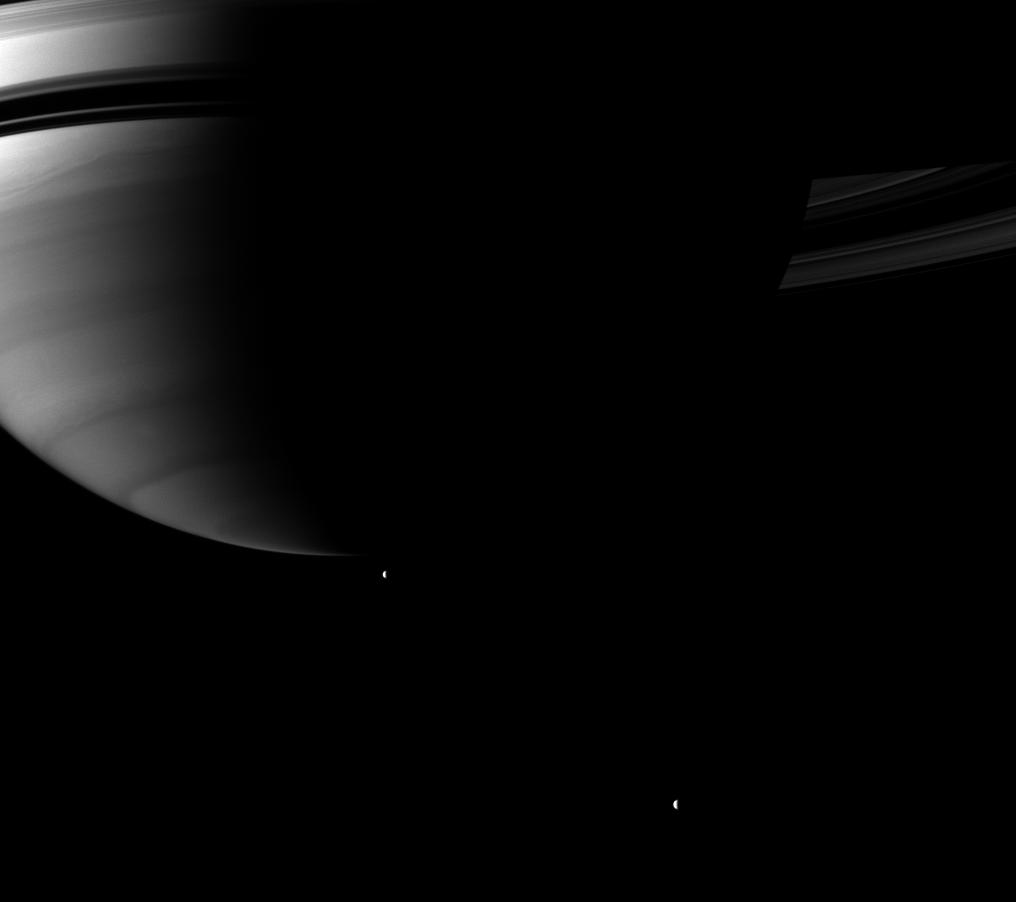Beyond Saturn’s South

| PIA Number | PIA12689 |
|---|---|
| Language |
|
Looking up toward Saturn's southern hemisphere, the Cassini spacecraft pictures a pair of the planet's moons orbiting in the distance.
Tethys and Rhea orbit in the plane of the planet's rings, but from this vantage point they appear to be below the planet. Tethys (1,062 kilometers, or 660 miles across) is near the center of the image, and Rhea (1,528 kilometers, or 949 miles across) is in the lower right.
This view looks toward the southern, unilluminated side of the rings from about 12 degrees below the ringplane.
The image was taken with the Cassini spacecraft wide-angle camera on June 29, 2010 using a spectral filter sensitive to wavelengths of near-infrared light centered at 728 nanometers. The view was obtained at a distance of approximately 2.1 million kilometers (1.3 million miles) from Saturn and at a sun-Saturn-spacecraft, or phase, angle of 100 degrees. Image scale is 124 kilometers (77 miles) per pixel.
The Cassini-Huygens mission is a cooperative project of NASA, the European Space Agency and the Italian Space Agency. The Jet Propulsion Laboratory, a division of the California Institute of Technology in Pasadena, manages the mission for NASA's Science Mission Directorate, Washington, D.C. The Cassini orbiter and its two onboard cameras were designed, developed and assembled at JPL. The imaging operations center is based at the Space Science Institute in Boulder, Colo.
For more information about the Cassini-Huygens mission visit http://saturn.jpl.nasa.gov . The Cassini imaging team homepage is at http://ciclops.org .
Credit: NASA/JPL/Space Science Institute
